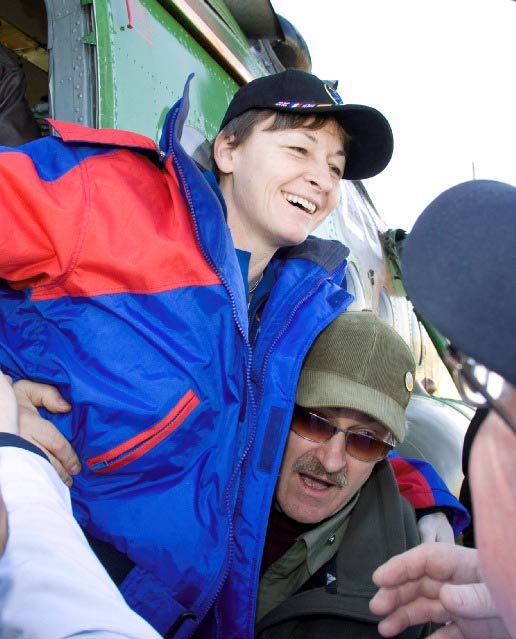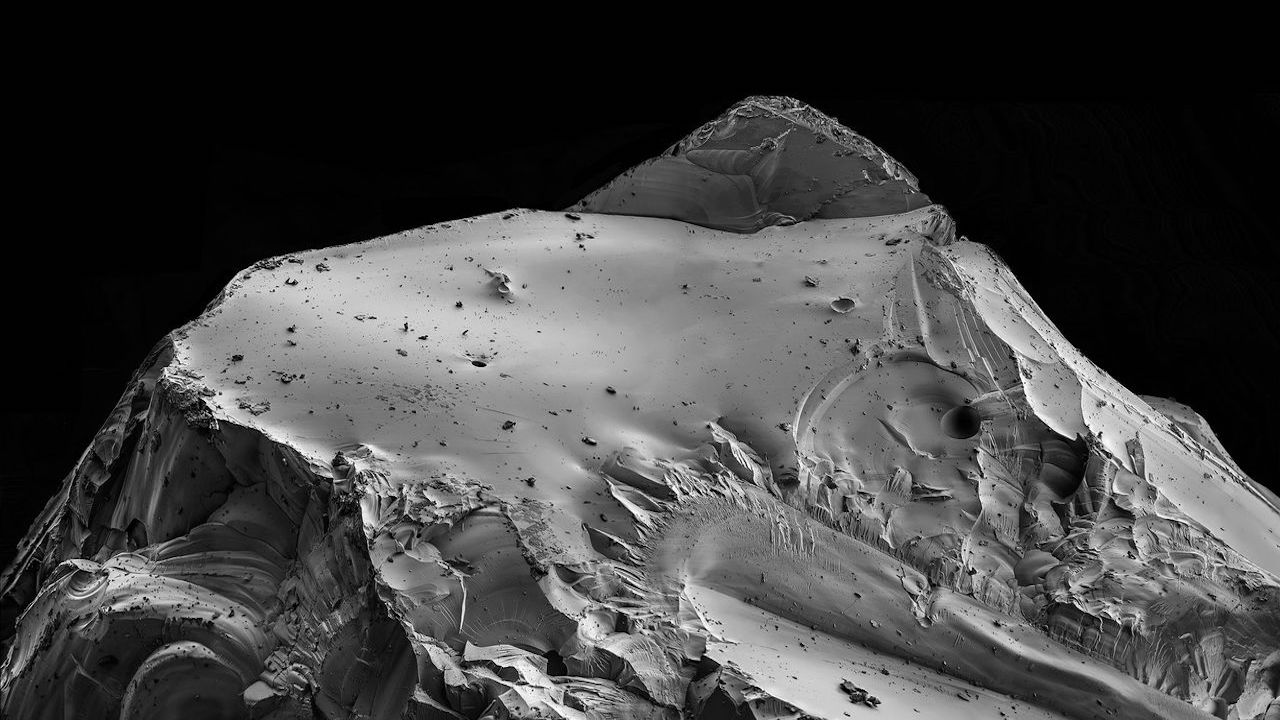Station's First Female Commander Confident of Soyuz Fix

HOUSTON —The first female commander of the International Space Station (ISS) said Fridaythat she is confident Russian engineers will find the source of a glitch thatsent a Soyuz spacecraft off course during her April 19 landing with twocrewmates.
U.S.astronaut Peggy Whitson, who commanded the station's six-month Expedition16 mission, told reporters here at NASA's Johnson Space Center that Russia'sFederal Space Agency and an independent group looking into her off-targetlanding and an earlier one from October should find the root cause.
"They'llget to the bottom of it," said Whitson, adding that the Russian agency'sdecision to include outside investigators in their review willaid the process. "That will be a better way of having it lessbiased."
Whitsonreturned to Earth aboard a Russian-built Soyuz TMA-11 spacecraft with Russiancosmonaut Yuri Malenchenko to complete a 192-day space station flight with alanding on the central Asian steppes of Kazakhstan. South Korea's firstastronaut So-yeon Yi also returned to Earth with them to wrap up an 11-day trekto the station.
The Soyuzreturned to Earth under a ballistic flight path, a steeper-than-normal descentthat subjected Whitson and her crewmates to just over eight times the force ofEarth's gravity, about twice what she expected. Whitson said the ballisticlanding approach is something she and Malenchenko were prepared for since itoccurred during the return of the station's Expedition 15 crew last fall.
The plungethrough the Earth's atmosphere was bumpy, with a malfunction delaying theseparation between the Soyuz's crew-carrying capsule and its disposablepropulsion module. But thorough training compensated for a loss ofcommunications with Russia's Mission Control during the entire descent, Whitsonsaid.
A group ofeight local Kazakhs greeted the Soyuz spaceflyers and helped Whitson and Yi outof the spacecraft, even if they didn't fully believe the astronauts came fromspace.
Breaking space news, the latest updates on rocket launches, skywatching events and more!
"HearingYuri tell the story as he was trying to explain to them where we came from wasvery entertaining," Whitson said with a laugh.
Whitsonreturned to her Houston home here last Saturday and is readapting to livinglife under the tug of Earth's gravity. Her garden, which she was lookingforward to seeing again after six months in orbit, is in good shape.
"Ihaven't been doing any digging yet, but I have checked out all my flowers tosee which ones are doing well," Whitson told SPACE.com.
A veteranof two long-duration missions to the space station, Whitson is NASA's reigningchampion for the most days in space (377 days over two expeditions) and saidher readjustment to Earth's gravity is going well.
During herExpedition 16 flight, she set a new record for the most spacewalking time by afemale astronaut and helped install a connecting module, Europe'sColumbus laboratory, and a storageroom for Japan's massive Kibo laboratory. The main segment for Japan's Kibolab, a tour bus-sized module that will become the station's largest room, is poisedto launch May 31 aboard NASA's shuttle Discovery.
"Iwould have loved to have had the whole thing there. I'm greedy that way,"Whitson said of the Kibo laboratory. "It was a lot of fun opening up newmodules. It's just an incredible new volume that we have, so that was veryneat."
- NEW GALLERY: The Expedition 16 Photo Album
- VIDEO: ISS Commander Peggy Whitson Takes Charge
- VIDEO: Europe's First ISS Cargo Ship Arrives

Tariq is the award-winning Editor-in-Chief of Space.com and joined the team in 2001. He covers human spaceflight, as well as skywatching and entertainment. He became Space.com's Editor-in-Chief in 2019. Before joining Space.com, Tariq was a staff reporter for The Los Angeles Times covering education and city beats in La Habra, Fullerton and Huntington Beach. He's a recipient of the 2022 Harry Kolcum Award for excellence in space reporting and the 2025 Space Pioneer Award from the National Space Society. He is an Eagle Scout and Space Camp alum with journalism degrees from the USC and NYU. You can find Tariq at Space.com and as the co-host to the This Week In Space podcast on the TWiT network. To see his latest project, you can follow Tariq on Twitter @tariqjmalik.
